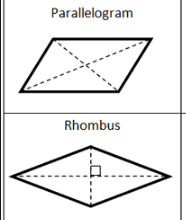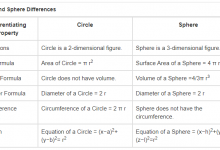How to Write Numbers in Standard Form?
The standard form of numbers is used to represent both large and small values in a condensed and uniform way, facilitating communication and computations. Scientific notation is vital in science because it allows scientists to express extremely large or small quantities accurately and efficiently.
While standard form is commonly used in scientific and technical contexts, it may not be prevalent in everyday situations. Standard form simplifies scientific calculations by allowing scientists to easily manage large or small measurements.
In this article, we will elaborate on the concept of the standard form of numbers. We will explore its definition, and important steps to write an ordinary number in the standard form as well as we will write some ordinary numbers into standard form.
What is the Standard Form of Numbers?
The standard form of numbers is a condensed and uniform way of expressing both large and small numbers using powers of 10. In standard form, we write an ordinary number as:
m x 10^n where 1 ≤ m < 10 and n Є Z that is the exponent (power) of 10.
Note: The standard form is not unique, as multiple combinations of coefficients and powers of 10 can represent the same number.
Writing Numbers in Standard Form:
The important steps to writing numbers in the standard form include:
- Identify the Number: Begin by identifying the number you want to represent in standard form.
- Find out Coefficient: Identify the coefficient “m” of the given number by writing a significant number of the original number such that 1 ≤ m < 10.
- The exponent of 10: Determine the number of digits after or before “m”, which the decimal point has crossed to come to the standard position. This count represents the power of 10.
- Write in Standard Form: Combine the coefficient and the power of 10 to represent the number in standard form.
More precisely, we can apprehend as follows:
- Steps to Write Large Numbers:
To write large numbers in standard form, identify the significant digits, count the number of decimal places to the right of the significant digits, and express the number in the form of “m × 10^n.”
- Steps to Write Small Numbers:
To write small numbers in standard form, identify the significant digits, count the number of decimal places to the left of the significant digits, and express the number in the form of “m × 10^ – n.”
Advantages of Using Standard Form:
The standard form of numbers offers several advantages, making it a preferred choice in various fields:
- Conciseness: Standard form condenses lengthy numbers, making them more manageable and easier to compare.
- Clarity: It provides a clear representation of the order of magnitude, allowing for a better understanding of the number’s scale.
- Ease of Computation: Performing arithmetic operations with numbers in standard form is more straightforward and less error-prone.
- Scientific Relevance: Standard form is commonly used in scientific and engineering disciplines, such as physics, chemistry, and astronomy, facilitating communication and data analysis where large or small measurements are common.
- Uniformity: Regardless of the magnitude, all numbers in standard form follow the same structure, promoting consistency and ease of interpretation.
- Efficient Communication: Using the standard form in scientific literature and research papers ensures a clear and concise representation of data.
- Easy Comparison: Standard form allows for comparing extremely large or small numbers easily.
Examples of Standard Form of Numbers:
Let’s explore some examples to grasp the concept of the standard form better:
Example 1:
Express the number 730 000 000 000 000 000 in standard form.
Solution:
Step 1: The non-zero digits (73) make up the coefficient, which we are able to determine.
Step 2: Decimal point will be located after the first non-zero number, like 7.3.
Step 3: Determine the number of digits after 7. There are 17 digits to which the decimal point has crossed to come in the standard position. This will be the exponent of 10 i.e. 10^17.
Step 4: So, the given number in standard form will be expressed as 7.3 x 10^17.
Example 2:
Express the number 0.000 000 000 000 000 000 047 in standard form.
Solution:
Step 1: We identify the coefficient i.e. the non-zero digits (47) will form the coefficient.
Step 2: Place the decimal point after the first non-zero digit i.e. 4.7
Step 3: We count the number of digits before 4. There are 20 digits to which the decimal point has crossed to come in standard position from left to right. This will be the exponent of 10 i.e. 10^-20.
Step 4: So, the given number standard form will be expressed as 4.7 x 10^-20.
Example 3:
Express the number 0.000 000 000 000 000 000 000 059 in standard form.
Solution:
Step 1: We identify the coefficient i.e. the non-zero digits (59) will form the coefficient.
Step 2: Place the decimal point after the first non-zero digit i.e. 5.9
Step 3: We count the number of digits before 5. There are 23 digits to which the decimal point has crossed to come in standard position from left to right. This will be the exponent of 10 i.e. 10^-23.
Step 4: So, the given number standard form will be expressed as 5.9 x 10^-23.
Using a standard form solver can help you avoid difficulty while dealing with large and small numbers when converting them to standardized forms.
Conclusion:
The standard form of numbers, also known as scientific notation, is an invaluable tool for representing large and small numbers in a concise and standardized manner. In this article, we have explained the standard form of numbers briefly. We described its definition and steps to represent ordinary numbers in the standard form with some examples.


